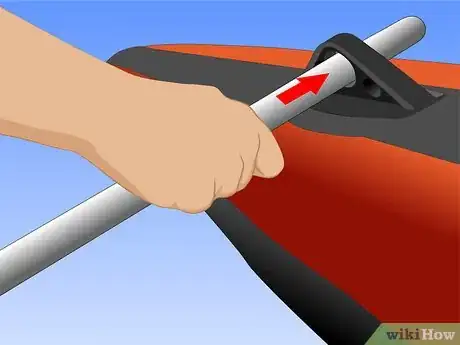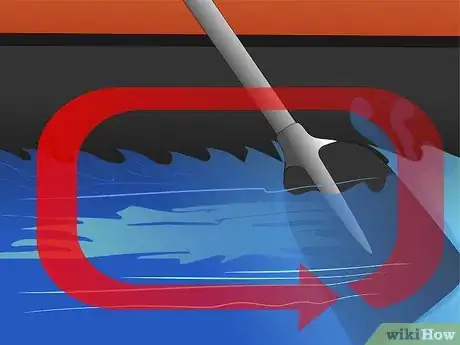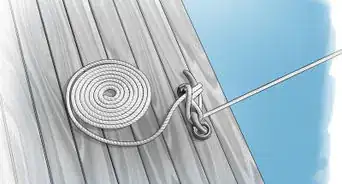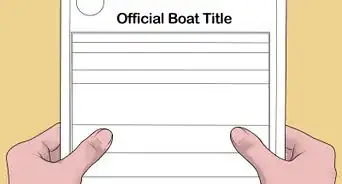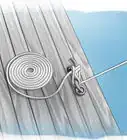X
wikiHow is a “wiki,” similar to Wikipedia, which means that many of our articles are co-written by multiple authors. To create this article, volunteer authors worked to edit and improve it over time.
This article has been viewed 24,209 times.
Learn more...
The inflatable boat, or dinghy, is arguably the most lightweight and versatile of all water vessels. Larger boats often come equipped with a dinghy in order to navigate smaller channels of water. Most people with a medium to large arm span and a strong back can row an inflatable boat safely using basic propulsion techniques.
Steps
Part 1
Part 1 of 2:
Prepping the Inflatable Boat
-
1Connect a deflated boat to a pump. An electric pump is best for larger craft. Pump the inflatable boat according to the manual’s instructions.
-
2Attach the oars by threading them through the pockets at the top of the boat. There may be one or two sets of oars, depending upon the size of the boat. Larger boats are likely to also be equipped with an outboard motor.
- An oar is connected to a boat, while a paddle is separated and controlled entirely by the paddler.
- Face the oars in or atop the sides of the boat until you are loaded.
Advertisement -
3Place the craft on the water. Tie it from the anchor point to a dock if you are near the water. It is best to keep a rope tied to the boat for easy anchoring when you go ashore.
-
4Load the boat with supplies before you get on. Make sure to include a patch kit, a small pump, and a container for bailing along with your first aid kit. If you are leaving from shore, you may want to load supplies and then push the boat into the water.
-
5Get onto the boat. Sit on the seat assigned to the person paddling with your back to the water. If there are multiple people, the person who will be doing the rowing should get on first, so that you will have control of the boat from the beginning.
Advertisement
Part 2
Part 2 of 2:
Rowing the Inflatable Boat
-
1Get comfortable on the seat. Some boats have a raised seat for the person paddling, while others place it flush with the bottom. You may have to cross your legs and lean back against the back of the boat to find a sustainable rowing position.[1]
-
2Grasp the handles of the oars. If they are adjustable, you should adjust them when you find a calm spot on the water or before you take off. The top of your hands should go on the top of the oar, with the blade perpendicular to the water’s surface.
- Your thumb can go on the end of the handle or wrap around the bottom.
-
3Glide both oars above the surface of the water, and then dig them into the water when your arms are fully extended. You will lean forward and your arms will go forward to move the oars backward and vice versa.
-
4Engage your abdominal muscles. Lean back and pull the oars back while they are completely submerged, until your arms are even with your chest. Focus on sitting as straight as possible while you row.
-
5Focus on the pace of the rowing. The pushing motion should be as quick as possible, so that the oars aren’t out of the water for long. Then, the pulling motion should be as deep as is comfortable with your posture.
- Flipping the oars out of the water as quickly as possible will minimize wind resistance.
-
6Turn the boat by lifting one oar out of the water and continuing the motion with a single oar. Rowing with just the left oar will turn you counterclockwise. Rowing with only the right oar will turn you clockwise.
Advertisement
Things You'll Need
- Pump
- Oars
- Rope
- Patch kit
- Gloves
References
About This Article
Advertisement

